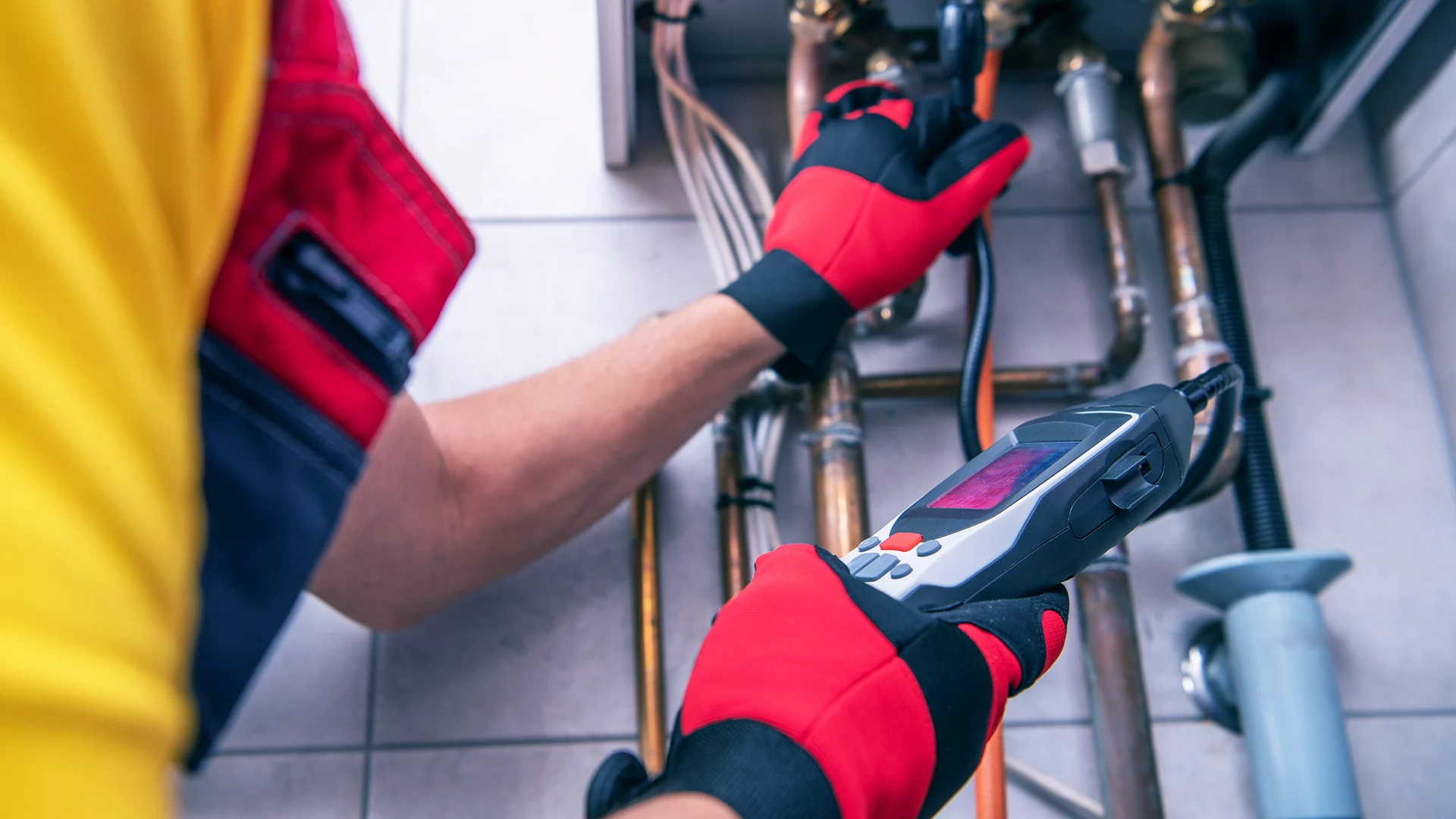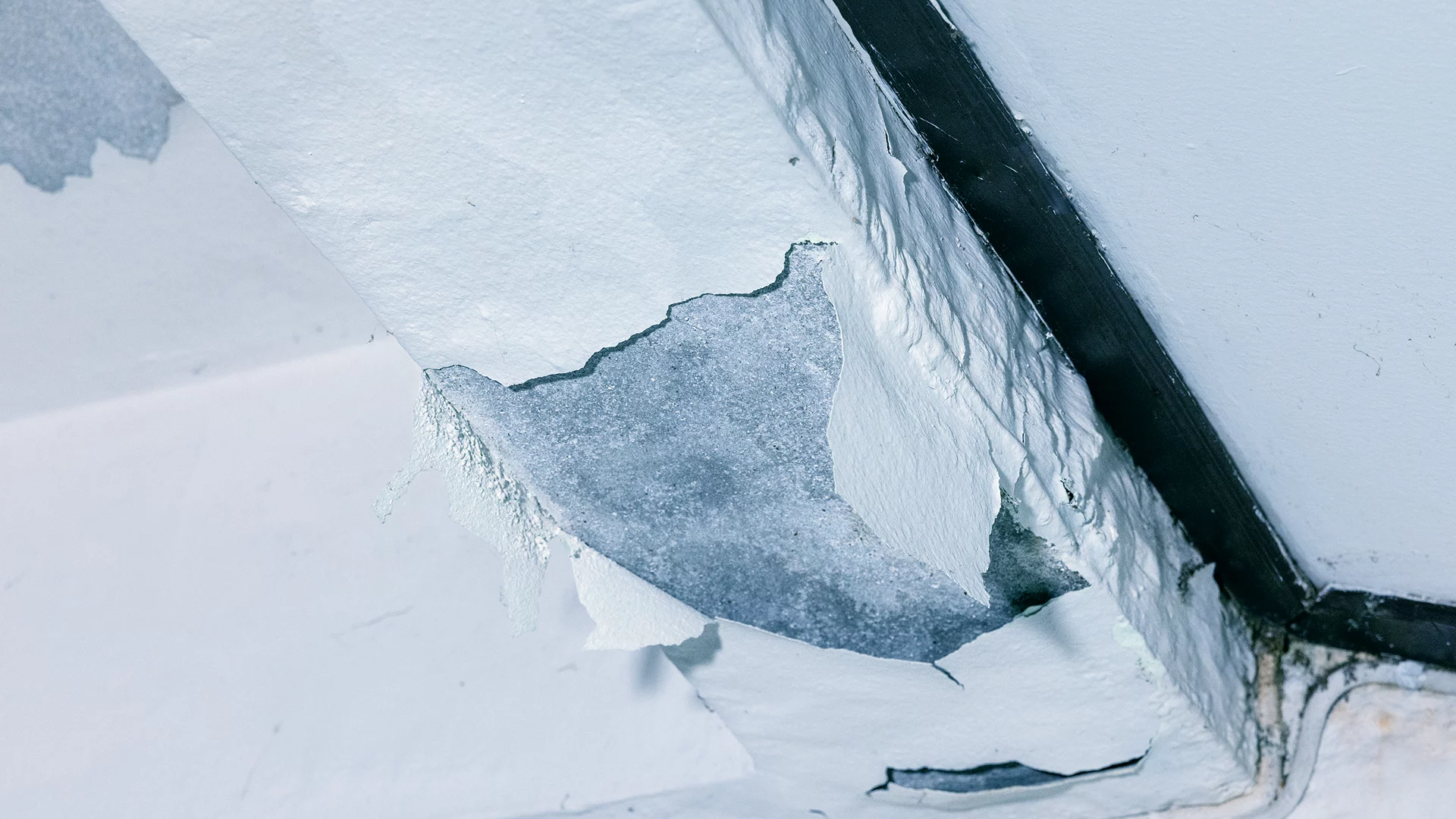Water damage rarely announces itself. A tiny drip behind a wall or in a plant room can go unnoticed for weeks, potentially causing millions in utility costs, downtime, and repairs. However, unlike fire or theft, water risks rarely receive the proper attention and investment.
In the US, facilities lose over 2 trillion gallons annually due to undetected leaks, costing businesses billions in damage claims and wasted costs. The financial stakes are sky-high, with water damage now one of the top causes of commercial property loss, even outpacing fire in specific markets.
The conclusion for facility management and risk leaders is clear: ignoring water risk is no longer an option. You must replace outdated and traditional stopgap measures with smart leak detection equipment. But what equipment exactly?
What Is Water Leak Detection Equipment?
Water leak detection equipment monitors, identifies, and mitigates water leaks in buildings or infrastructure. These range from basic consumer options (like spot detectors) that are widely available for purchase to advanced enterprise-grade water intelligence platforms. These advanced platforms typically use AI and other technologies to analyze flow patterns across facilities or entire portfolios.
Mission-critical facilities require protection beyond simple facility management best practices and basic technology. Preventing leaks in complex water systems depends on integrated platforms with advanced capabilities. These include continuous monitoring, intelligent anomaly detection, automated shutoff, and real-time reporting.
As importantly, they must integrate seamlessly with building management systems (BMS) and facility workflows, giving decision-makers complete visibility and control across entire sites and portfolios.
Types of Water Leak Detection Equipment
Various technologies suit different facility types, sizes, risks, and budgets. Whether it’s commercial real estate or laboratory management and healthcare facilities, the right choice depends on how central water systems are to everyday operations and how much disruption a leak could cause. Generally, however, water leak detection equipment can be classified as:
1. Local and Basic Detection
Basic detection tools include small, individual spot detectors, rope-style sensors, and moisture alarms. Like smoke detectors, they trigger when moisture or water physically reaches the device. While highly affordable and easy to install, this type of water leak detection equipment relies on someone responding quickly to the alarm, and can only cover a small area.
2. System-Level Monitoring
Flow monitoring systems analyze water usage patterns and trends to detect abnormal activity (like continuous flow or sudden spikes) throughout the water network. Pressure monitoring, typically used in closed-loop systems like commercial HVAC systems, spots pressure irregularities that may indicate a leak. These methods offer broader visibility than point sensors, but they may not always be able to catch subtle leaks.
3. Diagnostic Tools
Unlike system-level monitoring, which is continuous, diagnostic tools are episodic and used when there is a suspicion of a leak. They include acoustic and thermal imaging tools. Acoustic systems detect leaks by analyzing sound frequencies produced by escaping pressurized water in underground or inaccessible pipes. Meanwhile, thermal or infrared imaging spots temperature differences that can reveal hidden water ingress behind walls or under slabs.
![]()
4. Enterprise and AI-Driven Water Intelligence Systems
For water leak detection at scale, there are comprehensive platforms like WINT. These high-end solutions continuously monitor all water systems in a facility, analyze flow anomalies in real time, and can automatically shut off water to stop escalation. Their integration with BMS and reporting tools also supports compliance and ESG objectives, establishing these tools as the benchmark for enterprise risk and exposure management.
| Criteria | Basic & Local Detection | System-Level Monitoring | Diagnostic Tools | Enterprise & AI-Driven |
| Automation | Manual alarms only | Alerts via flow/pressure data | Operator-driven (manual checks) | Automated detection + shutoff |
| Response Time | Delayed (requires human) | Fast (minutes) | On inspection | Instant (seconds) |
| Coverage Area | Very limited | Building systems/loops | Specific areas (on demand) | Entire site/portfolio |
| Integration | None | Limited integration possible | None | Full BMS + workflow integration |
| Sustainability Impact | Minimal | Moderate (detects inefficiencies) | Low (reactive use) | High (20–25% water savings, ESG alignment) |
| Cost | Low | Medium | Medium to High | Higher upfront cost, strong ROI |
| Scalability | Low | Moderate | Low | High |
Key Features to Look for in Leak Detection Equipment
1. Sensor Accuracy and Early Detection
The sooner you identify a leak or abnormal water use, the more damage you avoid. Enterprise-grade platforms use advanced analytics, AI, and continuous flow/pressure monitoring to identify anomalies that traditional spot sensors would miss. They help prevent both catastrophic failures and chronic inefficiencies that quietly inflate utility costs.
2. Automation and Rapid Response
Time is the most critical factor in water damage. Every second of delay in human response to a water leak in your facility can mean thousands of dollars in mitigation and repair costs. Manual alarm systems depend on staff availability, which creates an unavoidable lag. Advanced platforms eliminate this risk through automated shutoff valves that respond in seconds, isolating the affected line before water spreads to other systems or critical equipment.
3. Scalability Across Facilities
Water leak detection must scale regardless of whether you manage a single office complex or a global portfolio of data centers. Basic detection tools are limited to a single building or floor, quickly becoming impractical for organizations operating across multiple properties.
You need scalable software solutions that can grow with your portfolio, providing centralized monitoring for entire sites or even global operations. With all the data in a single view, you can see real-time water performance, compare it across locations, and apply the same risk policies everywhere.
4. Integration and Reporting
Everything is interconnected and measured in facilities today. That’s why you should only consider platforms that integrate seamlessly with BMS and facility workflows, so water risk is monitored alongside HVAC, energy, and security. This integration streamlines operations and enables automated reporting for compliance, insurance audits, and ESG disclosures.
5. Resilience and Continuous Protection
Leak detection is only valuable if it works under all conditions. Power outages, connectivity failures, or network disruptions often occur during emergencies, precisely when leaks pose the most significant risk.
WINT’s leak detection doesn’t shut down even if the central system goes offline. Each site has its edge device that keeps running without being linked to the cloud. Each edge device comes with backup power supplies and redundant communication channels, so it continues to work as usual even in the event of a power cut or network failure.
Choosing the Right Equipment for Your Building
1. Facility Type and Water System Complexity
A tower block with chilled water loops requires a different level of protection than a small residential building. In a large building, leaks can move quickly through complex pipe networks, so it makes sense to use monitoring that tracks pressure and flow across the system. A small property doesn’t usually need that level of coverage. Often, it’s enough to put a few detectors where leaks start, such as a boiler room, a plant cupboard, or near laundry equipment.
2. Downtime Tolerance
Consider what happens if the water supply is interrupted. In a hospital or data centre, even a short interruption can cost millions or put safety at risk, so those places depend on advanced automatic water leak detection and shut-off systems that instantly trigger shut-off when a leak appears. On the other hand, if a building can afford a slower, manual response (for example, a small office or residential block), a lighter setup without full automation may be enough.
3. Reporting and Compliance Requirements
Regulators and investors are putting more pressure on building operators to meet ESG and sustainability targets. That means it’s no longer enough just to detect leaks – you also need reliable data that can be used in audits and reports. Choose systems with built-in software that logs events automatically, produces reports without manual work, and connects with your existing building management platforms. This automation makes compliance easier and gives management teams the documentation they need at short notice.
4. Budget and Scalability
Money always plays a role, but the real question is how expenses add up over time. A small detector works if you’re looking after a single office or shopfront, but the picture changes once you run several buildings. In this case, you would benefit from advanced systems that can scale and pull all your buildings’ data into one dashboard. They might be more expensive initially, but they also prevent costly repairs and wasted water, which is where the savings show up in the long run.
The New Standard for Water Leak Detection Equipment
Water leaks can start small but quickly escalate into significant operational and financial risks. In 2025, water leak detection equipment will be as essential as fire protection for mission-critical facilities. Organizations looking to reduce water risk and increase resilience are moving beyond outdated devices and adopting integrated solutions that set a new standard for water management.
WINT uses AI to spot irregular flow or pressure patterns and can trigger automatic shut-offs to prevent water damage. Unlike traditional setups, protection continues even in adverse conditions thanks to autonomous edge devices with backup power and redundant connectivity. The platform integrates with building and incident management systems, giving teams real-time visibility, centralized control, and automated reporting that supports compliance and ESG goals.
Advanced solutions like WINT deliver clear ROI for facility leaders: reduced insurance costs, avoided damage claims, and efficiency gains that can compound across water systems or entire portfolios. Contact us to discover how WINT can protect your operations and bottom line from costly leaks.


